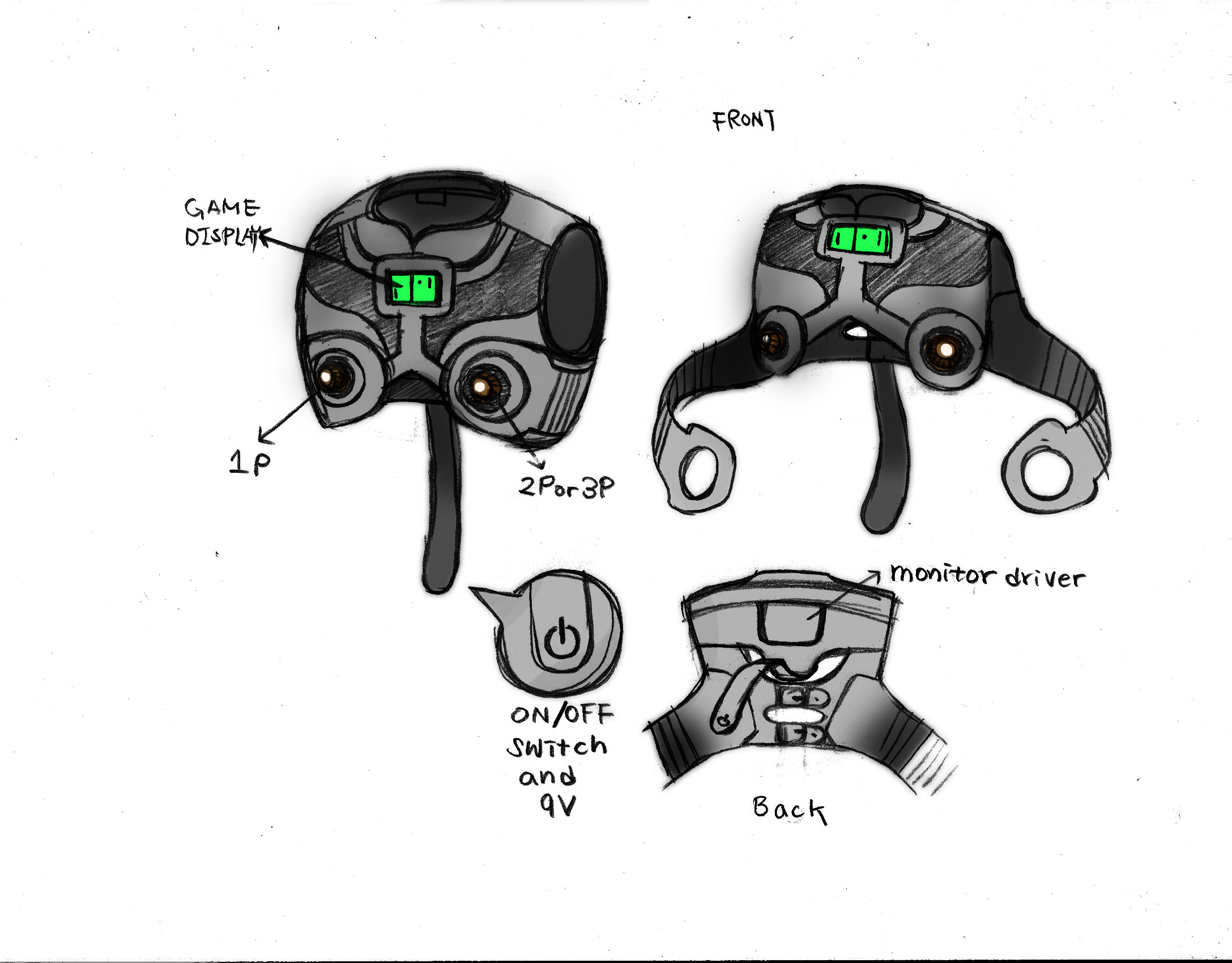Author: Kyle Li
Shadow bots: projected line follower robot
One of the benefits working with SMALLab is the unlimited R&D opportunities with the system. In the beginning of the research, we as a team dug deep into SMALLab, broke it down to the finest grind, and tried to find out and understand every single attribute and affordance this play space has to offer. One of them that I was excited about is the over-sized projection from the ceiling. With black and white image or drawing, this 6400 lumens projector can create high-contrast bright and dark areas on the floor. This is how the shadow bots idea came to mind, to create line follower like robots to follow the edges of dark areas.
I started out the experiment with Lego Mindstorms first. My out-of-box Lego light sensor doesn’t work well in this environment so I decided to make my own sensors. The experiment is awesome, the back and white projection has created a virtual wall for this little yellow mobile bricks (see the first video). I then made an Arduino version of the same robot with a Tamiya bulldozer kit.
Hack the LEGO sensor to read projection light.Playtest with a few friends and colleagues.
TreesNYC
Water is…
An interactive data visualization raising awareness of issues related to water. Using RSS feed as the source, blog posting that include the phrase “water is” are dynamically displayed. This is a collaborative work between Donny Chou, Yumi Endo, Taeko Fukamoto, Najilah Feanny Hicks, Hsiang Ju and Mike Sy Lee from the Parsons Design & Technology department. Most of the collaborators are my proud students. I had help build the initial prototype for this project.
Nana
Nana, my MFADT thesis, is a non-player game built with a modified video game console and a repurposed game controller. The project reduces the role of human players to mere spectators and explores the interplay between machines. Nana, the name of the little robot, is a curious video game controller with a mobile sub-unit. She rolls on a flat LCD screen and communicates the information she found on the colorful screen to the game console (The Mother). The Mother reads the information and turns them into various direct and indirect outputs, mostly in the forms of sound and visual. Once a while, when the information sequence is matching certain condition that is agreed between Mother and Nana, Mother will turn the screen off. Nana will then take a rest, and a random bedtime story about Nana will be narrated by Mother before everything goes back to normal.
I didn’t come to DT to be a creative technologist, but like most of my peers, I was seeking a change in my design career. After I took all the necessary steps and figured out how to built a Simon Says electronic game in the physical computing (pcomp) class, it was clear that interactive electronics is the change I was looking for. That being said, I started late, I didn’t dive into the world of physical computing right in the beginning, so when I entered my thesis year, I was still taking pcomp themed courses. Every Time I am introduced to a new possibility, I will change a part of my thesis if not all of it, that drives my thesis teacher nuts. I tried to catch up and get ahead. Eventually, I landed on the idea of Mother and Nana, an expandable and interconnected system that can grow with my newly gained knowledge.
I created a circuit to read the voltage sent to the vibration motors in the game controller. The strength of the voltage is controlled by API in XNA. Therefore, I can create my own protocol to map the strength of the voltage to a set of commands in my microcontroller (BS2). For input to the XNA, I use the analogue stick(s), it is made of two potentiometers with about 10K resistance each. In XNA, the resistance will be mapped to a number between -1 and 1.
I had a lot of fun hacking Xbox 360 controllers, especially making the slave mobile sub-unit. It is made of two modules, a motor module and secondary communication module (SCM). The motor module came straight from an old toy of mine, it has two sets of geared motors well intergraded together in a metal structure. SCM is slightly complicated. It is made of an Atari 2600 cartridge PCB, a BASIC Stamp 2 (BS2), a motor driver, and a set of two optoisolators. When I designed this chassis I decided to look back to early video game hardware for inspirations. I have been using the Atari 2600 cartridge PCB for some of my BS2 projects in the past. The PCB has exactly the same number of pins as a BS2 chip. I usually mount my BS2 on a PCB, and use it with a regular Atari 2600 connector, it looks really nice on top of a robot.
https://makezine.com/2008/05/30/parsons-design-technology-1/
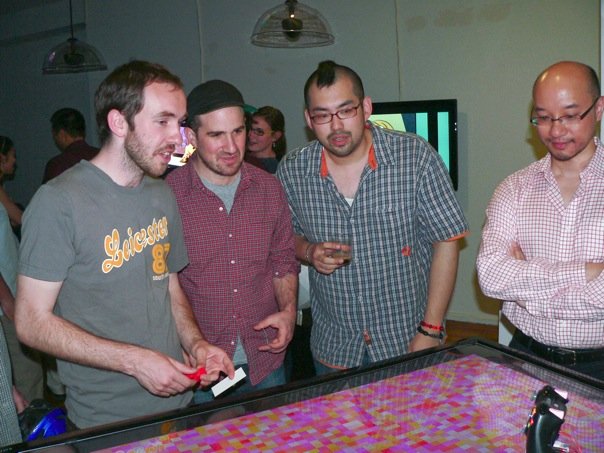
XBOX 360 and Valentino Braitenberg’s Vehicles
Valentino Braitenberg’s Vehicle is probably the first great book for anyone who wants to get into cybernetic or artificial intelligence. It is easy to understand and very fun to read. I learned in the first chapter with simple experiment on sensory motors how modifying individual behavior can effect the entire system. This idea is universal for any system design.
Braitenberg’s Vehicle experiment starts out with a heat sensitive sensor wired to a motor that drives a wheel in a straight line. The higher the heat, the faster the motor, vise versa. When two sets of sensor and motor bundles together and each sensor is given different amount of heat, the bundle turns. And by reconfiguring the internal connections, it changes the behavior of the bundle (system) as a whole.
I recreated this experiment in XNA and hacked a XBOX 360 controller to simulate the sensors. Instead of heat sensors used in the original experiment, I used photodiodes for my own convenience. The hack part is a no-brainer, simply connects photodiodes to the two potentiometers (X and Y axis) of either analog stick and read their values in XNA like one would do with Gamepad object.


XBOX 360 Asteroid Pop-A-Balloon
Experiment on alternative haptic technology. This balloon popper is driven by a modified Player 2 XBOX 360 controller, one of the vibration motors of which was replaced with an air pump. In this specific experiment, the pump responses to the player 1’s movement!
2008 New Year LED Marquee Helmet



It is the end of 2007 and we decided to go to time square for once in our life. I have to wear something shining and different for the new beginning! There was a programmable LED marquee display kit I bought in Japan and it was perfect for this occasion. I built the kit and mounted it on an aluminum lamp cone and wore it as a tiny stylish hat. There you go, only 1 in time square!
Pong Vest
::first vital sign
PONG VEST is a game vest that transforms a social phenomenon into a fun and awkward experience right where it happens.
Does it really matter where you play the game? Will the context enhances, or subverts the game experience? It is going to be a mixture of all. My vital sign for this first assignment is human gesture and the particular one I am looking into is men’s most mysterious phenomenon-”nipple grabbing.” In my participant observation, grabbing each other’s nipples is an interesting activity among men. They are sensitive; they are weak; They are the best targets for a friendly attack. It is usually the last minute enhancement to a joyful picture of close friendship. We’ve seen this happened countless time among us so now it is time to spicy it up! PONG is hands down the best solution to this project. Despite the fact that PONG is the best example for a paddle controller game, this historical landmark symbolizes the beginning of our body as a playground.
::precedents:
Instead of detecting a vital sign and have the wearable react to it passively I want the wearable to take over the initiation and then trigger the vital sign. Jennifer’s Intimate Controller will not become an intimate wearable until the interaction begins when the players touch the predesignated buttons in their underwear. (This reverse process also applies to most of the sensorless LED garments.)
A. Game controller and underwear- Jennifer Chowdhry and her Intimate Controllers
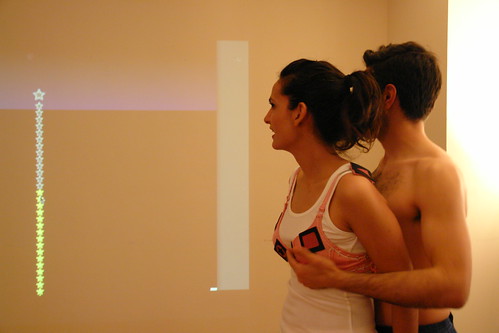
Jennifer Chowdhury, the mind behind what is either the stupidest or the greatest idea of all time, started by making a bra into a paddle controller. Touching the left breast made the paddle go left, and touching the right one made it go right. Building off of that, she came up with the controllers that has six different sensors in it, and for the fellas there’s a set of boxer shorts with another six sensors.
B. massage-me

Massage-me is a wearable massage interface that turns a video game player’s excess energy into a back massage for an innocent bystander.
C. Joseph Beuys

D. Lee Bontecou

E.Issey Miyake

C.D.E. Design wise, I look into works by Joesph Beuys, Lee Bontecou, and Issey Miyake. I want to bring out the awareness of a piece of cloth and the three dimensional aspect of it.
::methodology
>sketch out
click to enlarge
>testing the circuit on a breadboard


>solder them to a board and rearrange to make the circuit smaller
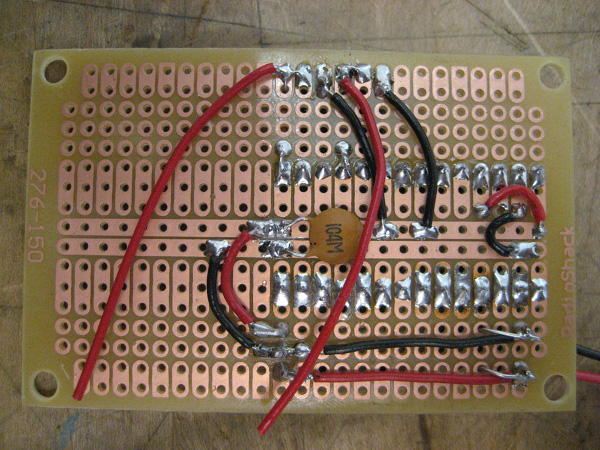
>hide the LCD serial output under the Stamp socket to save some space.
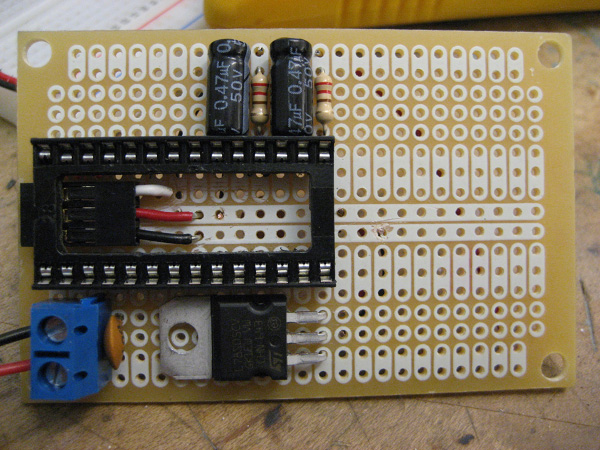
>mono phone jack as control input for easy detachment
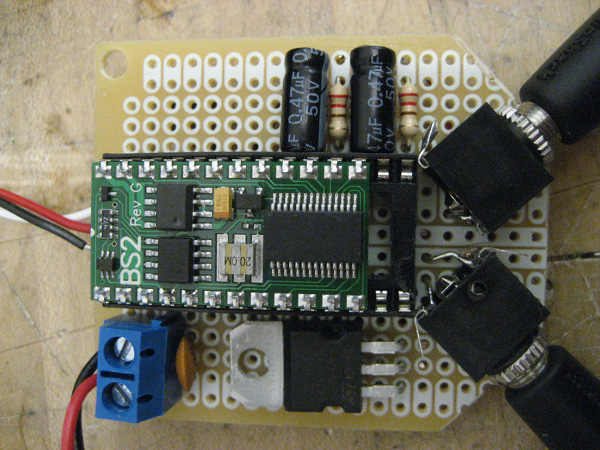
>add serial port ( the four pin thingy ) for easy update
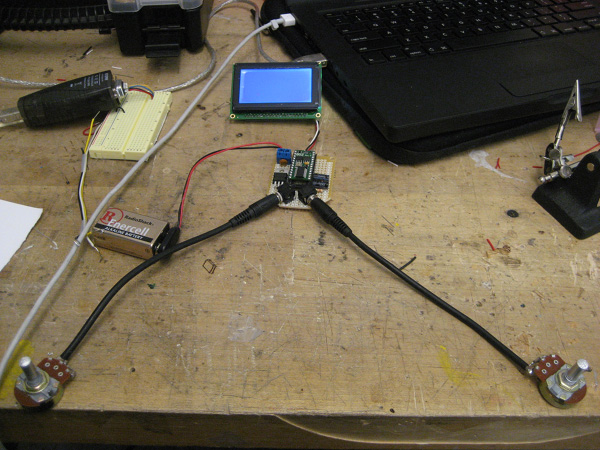
>screen testing
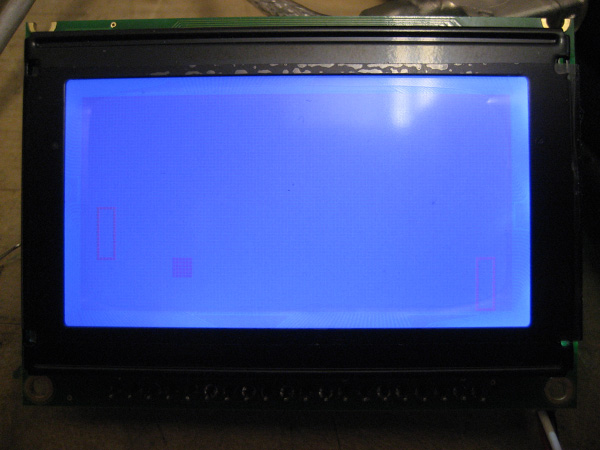
>the paddle controller is complete! (still need some skins)
>start sewing lately. I only know one way to sew and Alison taught me how to close it. I am covering the technology with fabric and will eventually move to bigger piece.
>it is done!


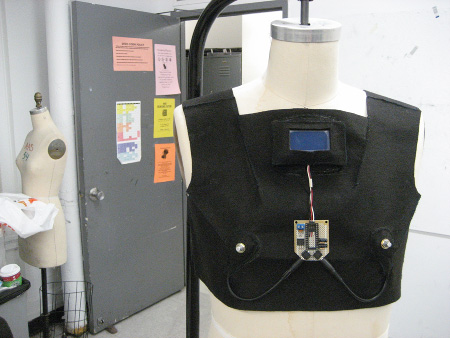
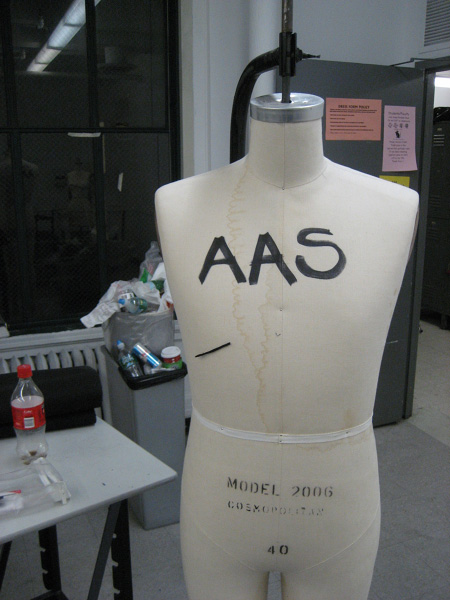
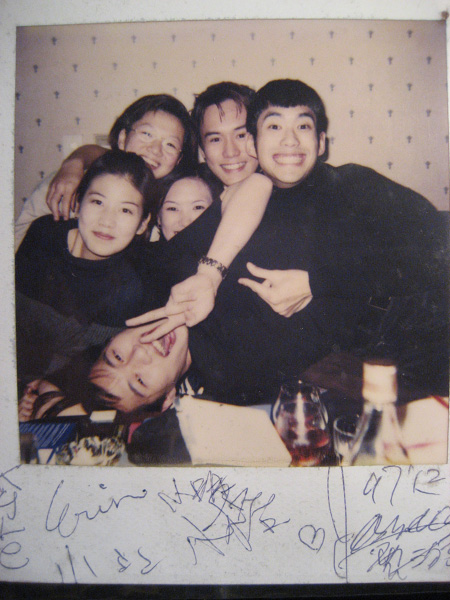
Sound Robot
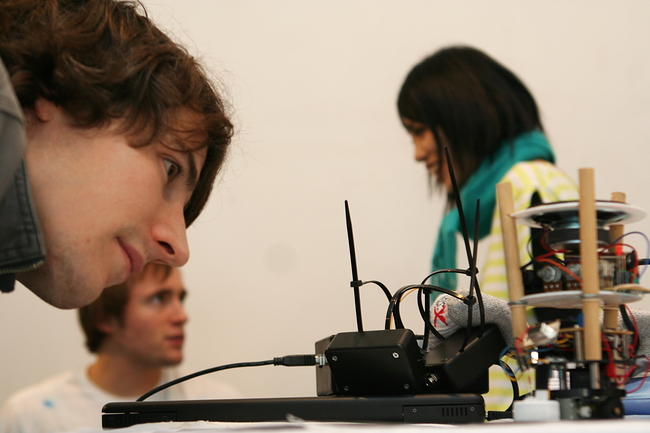

Tone generating robot and man, Mr. Resistor show, Soho, New York 2007, photography by Melissa Hum
1. imagine a visual to sound robot
Sound Robot is a simple system. It translates shades into music tones and broadcasts them to the world. The process is diagrammed in the picture below:

The personal manipulation box contains the rule set of the translation. It is entirely based on my personal taste, a play between different mediums, others might have different rule sets. The making of this robot is extremely fun. I had recently acquired a crate of Megalopolis games for a fairly decent price from Japan. I had one when I was kid and I knew it for a face that it contains a small mobile unit in it. This is a fairly easy hack, all I have to do is extending the motor wires out and connect them to my motor drive chips. After that, I made small structure to support the photocell and program my microcontroller. For the first iteration, I connected the sound output directly to a portable speaker with built-in speaker as seen in the video above.
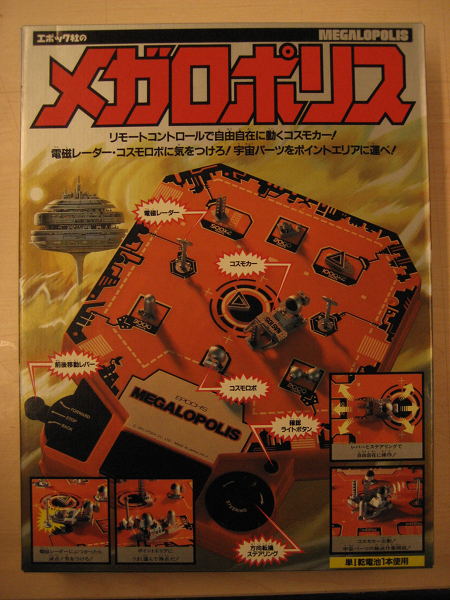
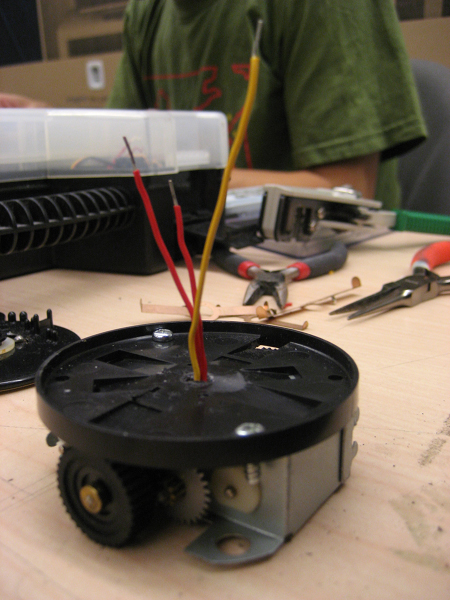


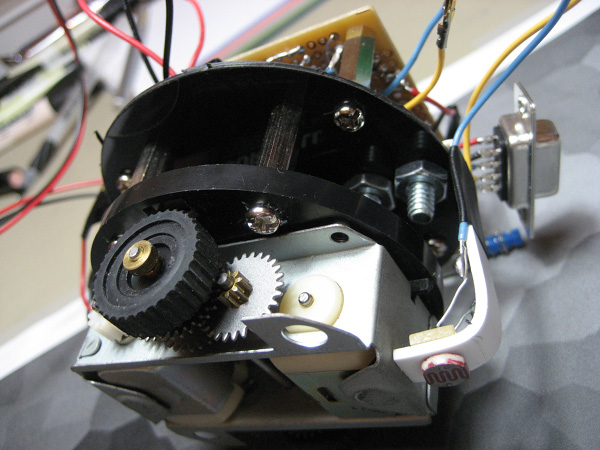

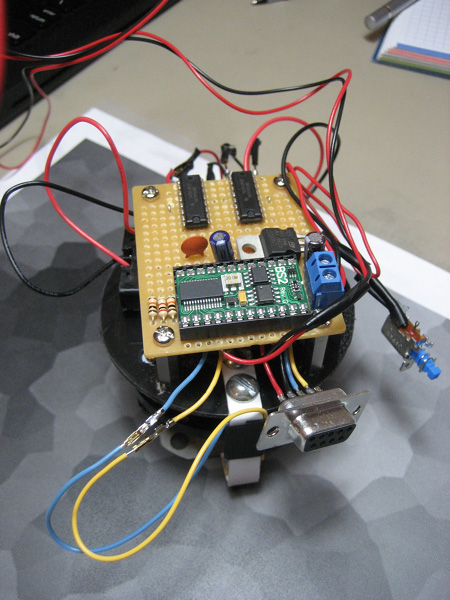
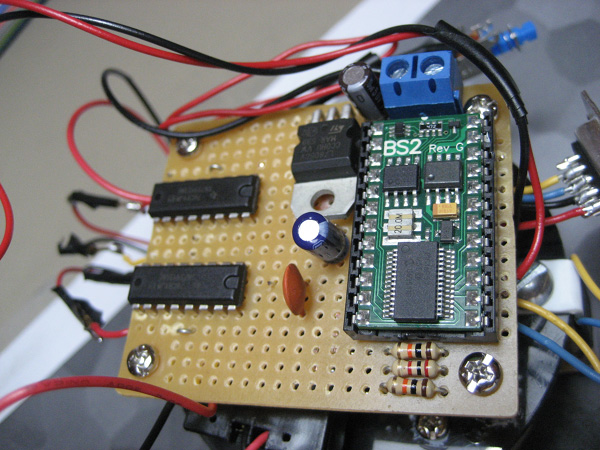
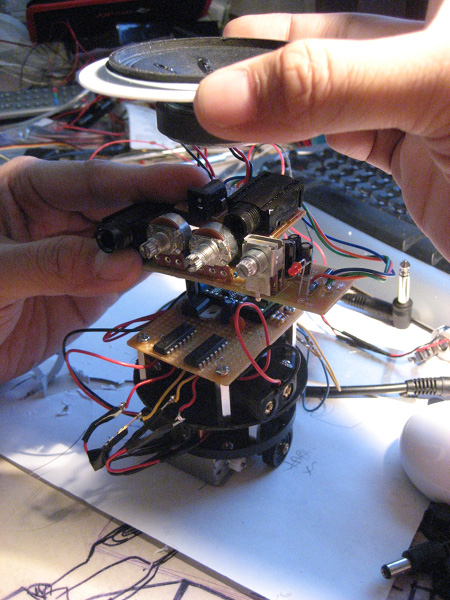
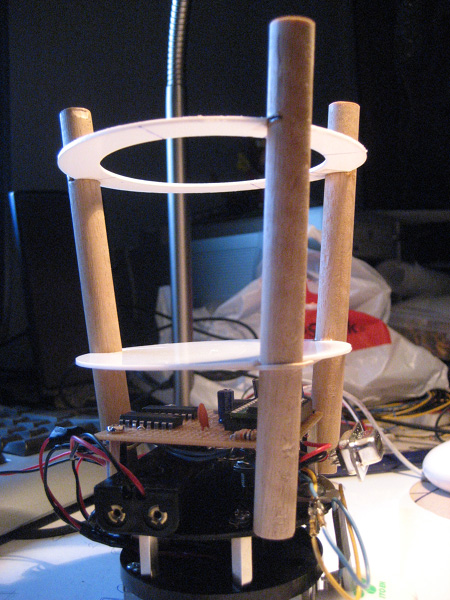
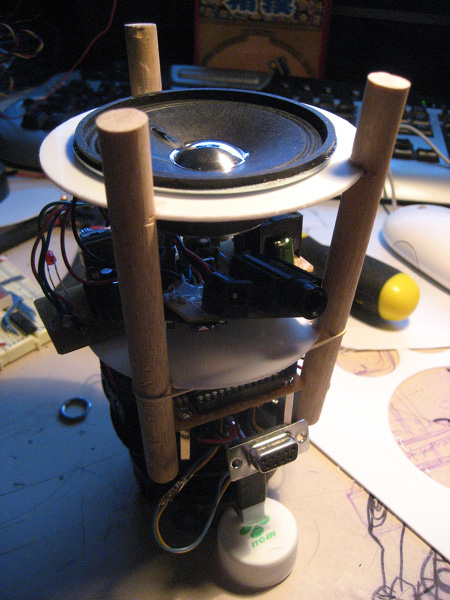
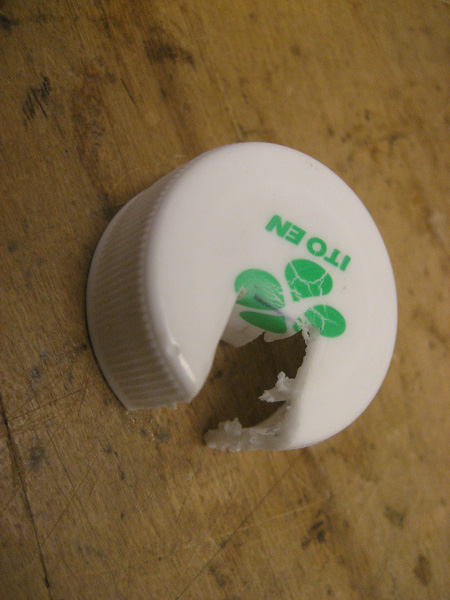
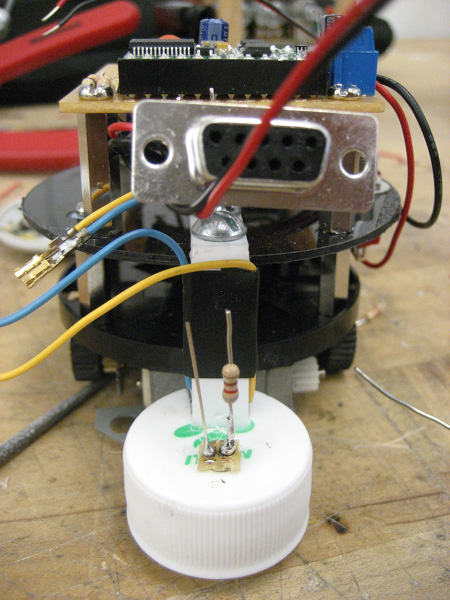


2.Master Mind, a sound to RF signal robot
3.Out Reach, a RF signal to movement robot
4.Untitled, a Sonar reading to TV signal robot
5.Genesis, a Brightness to Print (stamp) robot






